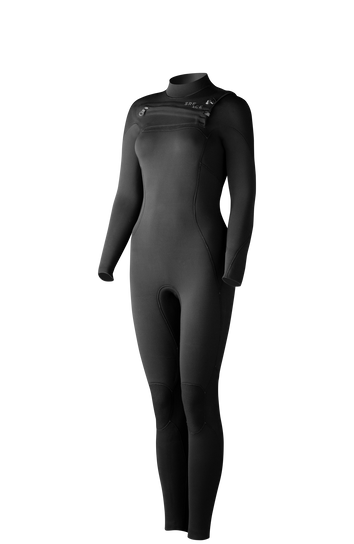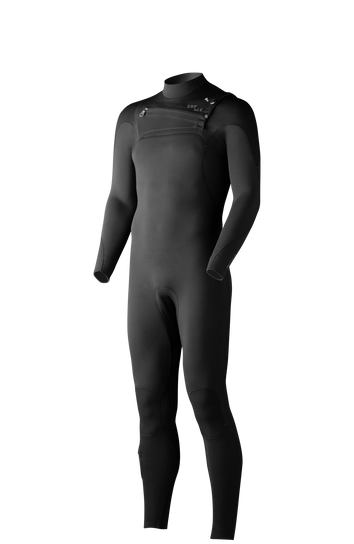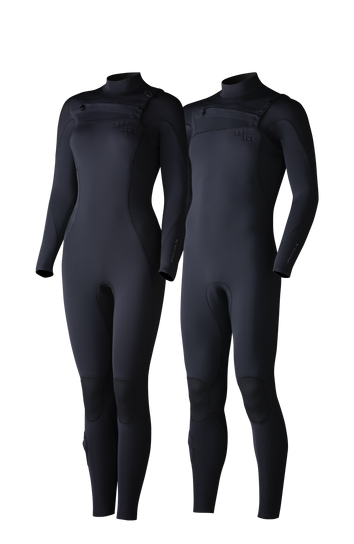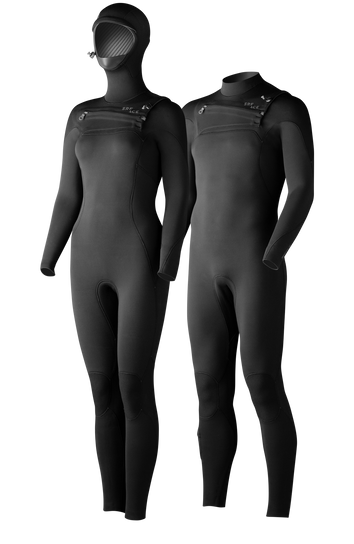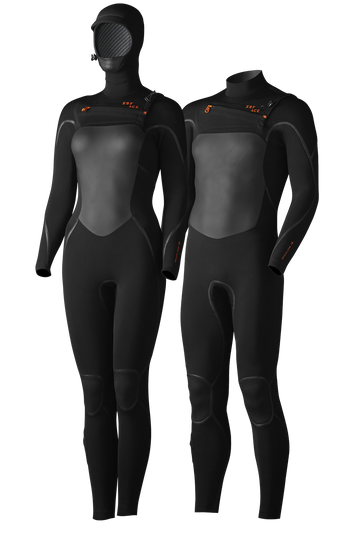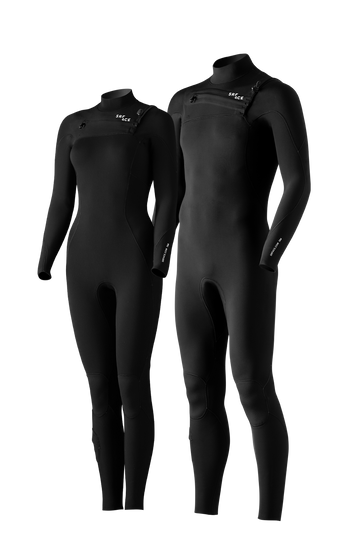
WHY SRFACE CHOOSES YAMAMOTO #40
Yamamoto #40 is a relatively new, extremely flexible and light type of high-end neoprene developed by the Japanese Yamamoto corporation. One of the key features of Yamamoto neoprene is that it is made from a high-quality, limestone-based neoprene. After testing dozens of different types of neoprene, we decided on the renowned Japanese Yamamoto neoprene for our new Remix wetsuits. Yamamoto neoprene provides the ultimate balance between insulation and flexibility.
Choose your wetsuit
YAMAMOTO CORPORATION
The Yamamoto company was established in 1964 and has been producing state-of-the-art neoprene ever since. Yamamoto is known for its high quality materials and impeccable production standards. We source Yamamoto #40 and ship the material to our manufacturer in Thailand who is one of the forefront runners in the field of wetsuit manufacturing. By supplying the best manufacturers with the best materials available we aim to achieve the highest possible quality for our wetsuits.

YAMAMOTO 40# NEOPRENE
Yamamoto offers different grades of limestone neoprene closed cell foam. The higher the number, the more flexible it is, ranging from #38 to #40 for surfing wetsuits. For a detailed comparison of the different materials, click here. Yamamoto #40 is used exclusively in high-end surfing wetsuits. Making them extremely flexible, warm, light and durable. By using Yamamoto #40 – arguably the highest quality neoprene available – the SRFACE Remix is able to provide uncompromising heat and flex.
Some wetsuits use #40 neoprene only in panels that require more stretch, such as the armpits, shoulders and arms. Wetsuits that make use of Yamamoto #40 in all panels are considered the most high-end premium surfing wetsuits available. Wetsuits that use Yamamoto #39 or #38 are considered mid or entry level wetsuits.
Yamamoto’s rubber material, which has a completely closed cell structure (honeycomb structure), has extremely low density (lightweight), high flexibility, and excellent heat insulation. Higher numbers of Yamamoto neoprene are not suitable for surfing but intended for diving suits. A major benefit of Yamamoto neoprene is its durability. Due to its high-quality materials and unique manufacturing process, it is able to withstand the rigors of regular use and maintain its shape and flexibility over time.

THE DIFFERENCE BETWEEN YAMAMOTO NEOPRENE AND ‘NORMAL NEOPRENE’
Throwback to the 1930’s when synthetic foamed rubber was invented and was called neoprene. Neoprene is an elastomer with the chemical name polychloroprene. Geek alert: Polychloroprene is produced through a chemical process by binding strings of a clear liquid called chloroprene together. The original chloroprene wetsuits were made with petroleum based chemicals, which are very harmful to the environment.
Yamamoto neoprene is made with raw materials such as limestone. The main limestone neoprene compound remains chloroprene, but instead of using petroleum based ingredients it now uses calcium carbonate from limestone to form chloroprene rubber chips. These rubber chips are melted down in an oven and go through a chemical process. The melted substance is infused with air bubbles and baked into a block of neoprene foam. The limestone used in SRFACE wetsuits is sourced from Mt. Kurohime in Japan which stores billions of tons of the purest limestone on earth. Out of this pure limestone, Yamamoto only uses the highest-grade available, containing 99.7% of calcium carbonate. The lower-grade limestone is used for cement. Read more about Yamamoto neoprene on the Yamamoto Corporation website.

ECO FRIENDLY LIMESTONE NEOPRENE
Some brands promote different fancy names for their so called more environmentally friendly neoprene, at SRFACE we like to tell it as it is. SRFACE has chosen to manufacture with limestone neoprene, which has a higher carbon footprint than natural rubber but is more flexible and warm. Please consider this when choosing a limestone neoprene wetsuit over a natural rubber wetsuit.
Want to go fully sustainable? Have a look at our Eco wetsuits made with the 100% natural rubber called Yulex®, a neoprene-free natural rubber. This material is a bit less flexible and warm than Yamamoto neoprene but has an even lower footprint compared to other types of (limestone) neoprene.
Featured wetsuits

THE SRFACE REMIX
Our new Remix wetsuits are made with Yamamoto neoprene to offer you a top-performing all-round wetsuit. More flexible than our Heat, but warmer than our Flex.
Using Yamamoto #40 neoprene allows for a wetsuit that is warmer than traditional limestone made wetsuits. Because of the extra generated warmth we were able to produce the wetsuit without sealed outside seams, making it more flexible than our signature Heat model.

Ready to surf?
Shop from €159



